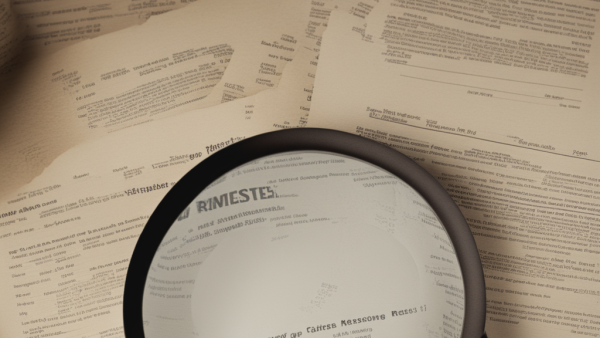
Last updated: October 06, 2022
Sales projections are critical for businesses. As a SaaS business owner, if you can accurately estimate how much money your business will bring in over the coming year, you will be able to make better financial decisions. It will allow you to allocate resources for growth and manage credit and cash flow efficiently.
Revenue run rate is an important metric that businesses use to project sales and measure their future financial health by estimating their revenue in a given time period, usually a year. For example, if your business made sales of £20,000 during a quarter, your revenue run rate will be £80,000 (£20,000 x 4). Run rate calculations are based on the assumption that present sales will continue through the year, and the business environment will remain stable.
If you are a business owner looking for more information on revenue run rate, you are in the right place. In this article, we explore what revenue run rate is, how to calculate it, the advantages and limitations of using it, and how you can do it efficiently. Let’s begin with its definition.

Table of contents
- What is revenue run rate?
- Why do companies use revenue run rate?
- How to calculate revenue run rate
- Projecting revenue for B2B SaaS businesses
- Pros and cons of calculating revenue run rate
- How to overcome the limitations of revenue run rate
- Revenue run rate FAQs
What is revenue run rate?
Revenue run rate is a metric used to forecast a company's future revenue and cash flow based on current revenue levels. Also known as annual run rate or annual revenue run rate, it is a quick and easy method for SaaS businesses to make financial performance estimates and use them as strategic guidance for important business decisions. In order to calculate revenue run rate, you can use existing sales data over a specific period of time and use it to extrapolate annual revenue.
What does revenue run rate indicate?
Revenue run rate is an indicator of your company’s financial performance as it considers the current revenue and uses it to predict a full-year figure. It is also an important metric that can help you evaluate the efficacy of new products and services. If your revenue run rate increases after introducing new products, it indicates that the addition is beneficial to your business.
However, you need to make an important distinction here between revenue and revenue run rate. It can be confusing because CEOs and executives often cite revenue run rates while discussing how their business is doing. Revenue run rate is only an estimate based on current data, whereas revenue is the total income that a business generates from the sale of goods or services in a given period.
Why do companies use revenue run rate?
There are various reasons why companies use revenue run rate to forecast their company's performance. We are listing the most important ones here:
1. Planning future spending and savings
Revenue run rate can be used to plan your budget. When you estimate how much money your business will make in the year, you can plan your spending more efficiently. This is especially important for small businesses that may have a limited amount of capital to spend.
However, businesses should recognise that revenue run rate may not always be a realistic assessment given that the financial environment can change owing to unexpected external factors.
2. Raising funds
Revenue run rate is a valuable metric for SaaS businesses and investors. For young SaaS companies looking to raise money, revenue or profit run rate are good metrics to present to potential investors. You can raise funds if your revenue run rate excites potential investors, but your revenue run rate should be able to withstand any form of scrutiny. This means that if you have used a month or quarter that was especially favourable to your business to forecast business performance, investors will see through it when they dig deeper into your numbers.
3. Hiring decisions
Revenue run rate can indicate how much your business will grow compared to the previous year. If it is a significant amount of growth, you may want to add more sales reps and new talent in general.
4. Measuring the impact of new divisions or products
Revenue run rate can help you judge how successful new products or new ventures have been for your business. Comparing the run rate before and after new product launches, for example, can be used to gauge their impact on your financial performance.
How to calculate revenue run rate
You can calculate revenue run rate with a simple formula. For this calculation, you need sales data for a minimum of three months (one quarter). If your business is brand new and you have sales data for just one or two months, you might want to wait before calculating revenue run rate. Otherwise, you risk making an estimate based on a really good or a really bad business month. You can, however, calculate run rate with monthly sales data.
Revenue run rate is calculated by multiplying the total revenue for a specific period by the number of those time periods in a year. For example, if you have sales data for a quarter, you can calculate revenue run rate by multiplying it by four. You can also arrive at revenue run rate by multiplying a month's revenue by 12.
Revenue run rate formula
There are several ways to calculate revenue run rate. We are listing them here:
1. If you have data for a month, here is the formula you can use:
Revenue run rate = Monthly revenue x 12
Example:
Monthly revenue: £10,000
Revenue run rate = £10,000 x 12 = £120,000
2. If you have data for a quarter, you can use the following formula:
Revenue run rate = Quarterly revenue x 4
Example:
Quarterly revenue: £50,000
Revenue run rate = £50,000 x 4 = £200,000
3. If you have a dataset that doesn’t fit into a month or a quarter period, you can use a different formula.
Let’s assume you had £100,000 in sales in the last 50 days. For a data set like this one, you can calculate revenue run rate by dividing the total revenue by the number of days and multiplying by 365.
Revenue run rate = Total revenue / number of days in period x 365
Example:
Taking the above-mentioned data, revenue run rate will be:
£100,000 / 50 x 365 = £730,000
Projecting revenue for B2B SaaS businesses
B2B SaaS businesses with a subscription-based model can use annual recurring revenue (ARR) as a metric to project yearly revenue. Unlike revenue run rate, which can be used by businesses with any type of revenue model, ARR is a metric meant for companies with a sizable subscription revenue. To calculate ARR, you need to know your monthly recurring revenue (MRR).
MRR is a metric used by B2B SaaS companies with a monthly subscription model, wherein customers pay a fixed fee every month. You can calculate MRR by calculating the sum of recurring revenue generated by customers in a month.
For example, if you have ten customers who pay a monthly subscription fee of £500, your MRR will be £5,000. You can use MRR to calculate annual recurring revenue or ARR. In the case of the above example, ARR will be calculated by multiplying MRR by 12.
£5,000 x 12 = £60,000
This is a helpful metric for enterprise SaaS companies that rely on monthly subscriptions that make up a major chunk of their recurring revenue.
Pros and cons of calculating revenue run rate
You should be aware of several advantages and limitations to calculating revenue run rate. Let’s begin with a list of pros:
Estimating future financial performance Calculating your revenue run rate will help you have a clear idea of how much your business' estimated sales will be at the end of the year. If the number isn't what you expect, you can design marketing campaigns and promotions to give your sales in the upcoming months or quarters a boost.
Budget allocation Calculating revenue run rate will help you budget. You can increase or reduce your budget allocations depending on whether your projected year-end sales will be higher or lower compared to previous years.
Estimating future demand You can predict future customer demand based on your revenue run rate. This is helpful in planning talent acquisition and marketing strategy.
It is a valuable metric for early-stage startups For new businesses, revenue run rate is a helpful indicator of their future performance since they don't have historical data to rely on. This can help with investor pitches and in planning spending and business strategy for the year, provided the business environment doesn't change drastically.
Here are the limitations of calculating run rate revenue:
One-time sales can skew estimates A large one-time sale in a month or during a quarter can upset your calculations, and you may end up with an unreliable number. For example, assume that a company gets a contract worth £50,000 in March in addition to its sales of £50,000. Going by this data, revenue run rate would be £1.2 million, which is way off considering this was a one-time sale in March, and revenue will bounce back to normal from April onwards. Companies can consider excluding one-time sales while calculating revenue run rate in such a scenario.
It doesn't account for growth This is especially important for early-stage companies that may grow exponentially within a few months or quarters; they may even double or triple in size. This makes annual revenue run rate calculations unreliable, especially if you use those to make a budget or estimate expenses. For SaaS companies with subscription revenue, you may not be able to leverage revenue from new users.
It can be deceptive and not be able to withstand scrutiny Annual run rate calculations can be easily manipulated to make it look like a company is doing better than it actually is. If you are a new business that wants to use the metric to influence investors, it may not work if you are calculating revenue run rate based on sales data from the best month or the best quarter for business. Investors understand this, and if you want to use revenue run rate to raise funding, you should bolster it with other reliable data.
It doesn't account for seasonal revenue The biggest drawback of run rate is that it is based on the assumption that revenue remains the same throughout the year. In reality, revenue for most businesses rises and falls depending on seasonal trends and other factors.
How to overcome the limitations of revenue run rate
There are ways to overcome the limitations of revenue run rate. Here are two important factors you need to consider:
Seasonality and events that impact revenue Most businesses see seasonal dips and spikes in revenue. Sports, cultural, social, or religious events impact sales as well. As a business owner, you should keep track of these events and avoid using sales data which includes these events to calculate run rate. This will help you arrive at more accurate and reliable estimates.
Leverage historical data If your company has been in business for a long time, you can use historical data to identify the months and quarters where sales rise or fall. You can use an average of these to calculate the annual revenue run rate to arrive at a more reliable figure.
Revenue run rate FAQs
What is the difference between run rate and burn rate?
Revenue run rate is a metric used to project a business' upcoming revenue based on its current revenue. Burn rate is a metric used to measure the rate at which a business uses or depletes its cash reserves. It is often associated with venture capital investing as it is used to determine how much time a startup has to add to its cash reserves or raise additional funds in order to sustain operations.
What is run rate EBITDA?
In mergers and acquisitions (M&A), buyers may calculate run rate EBITDA (earnings before interest, taxes, depreciation, and amortisation) of a target company to forecast its future financial health and make their bids. It is a more accurate representation of the state of the business at the time of an investment or a transaction. Run rate EBITDA is used when a company has recurring revenue or a subscription model. Investors prefer it over adjusted EBITDA, which doesn’t include data from new contracts, whereas run rate EBITDA includes current data from new contracts.
There are various ways of calculating EBITDA run rate, but buyers often use adjusted LTM EBITDA (The last twelve months' EBITDA adjusted for one-time revenue and costs).
How can I increase my company’s revenue run rate?
Increasing your company's revenue run rate is similar to increasing revenue. Here are some ways to give sales a boost:
Bundle your products Bundling your products and services can encourage consumers to buy more while reducing your marketing and distribution costs. Bundling products means you won't have to market different products and services separately but as one product, making it more cost-effective.
Add new modes of payment This may seem unconvincing, but adding new payment methods can actually help you improve sales. You can check the kind of payment systems your peers and industry leaders are using and add those. Setting up systems for payment modes that will help you get new customers is a good long-term strategy. Offering delayed payments or instalments can help you add new customers as well.
Offer discounts Offering discounts or coupons on new products can help you generate sales and get repeat customers. If customers try a new product at a discounted rate, they will likely come back later to buy it at full price.
Build a relationship with loyal customers Take care of your loyal customers. You should communicate with them regularly and try to build a relationship. You can start loyalty and referral programs and ensure that you always offer top-notch customer service.
Add more products and services and offer better prices Offering competitive pricing and continuing to add new products and services will help you gain market share, build a loyal clientele, and, needless to say, boost your revenue.
In conclusion, revenue run rate is a useful metric, but it can sometimes be skewed or inaccurate due to seasonal shifts in revenue. It can also be impacted by big one-time contracts that fall or expire in a specific month or quarter. But you can use historical data and trends to make adjustments and come up with an accurate and reliable estimate.
Written by

Sam founded his first startup back in 2010 and has since been building startups in the Content Marketing, SEO, eCommerce and SaaS verticals. Sam is a generalist with deep knowledge of lead generation and scaling acquisition and sales.


